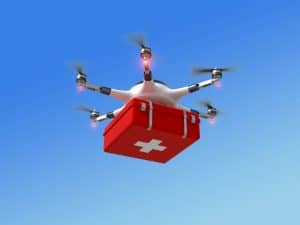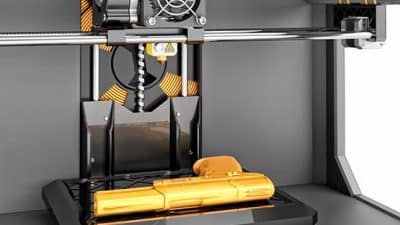Millions of people are affected by humanitarian crises in daily life. These crises include natural calamities, conflicts, and disease outbreaks. The emergency response aims at mitigating such situations to avoid loss of lives and minimize injuries.
On the other hand, first aid refers to the immediate attention or care given to a person in case of an accident, injury, or illness before more advanced medical care is provided or the person recovers. First aid training prepares individuals with the necessary skills to support victims before help arrives. They can preserve life, prevent the situation from worsening, and promote stamina. For better preparedness, it’d help to have a medical device in your first aid kits like a junctional tourniquet, trauma pads, bandages, gauze pads, cold compresses, tweezers, and examination gloves, among others.
Notably, first aid can heighten risks associated with the crisis if the correct procedures aren’t followed. Thus, it helps to incorporate technology to help marshal resources more effectively and make it easier for persons to reach out for assistance. Below are the significant trends and innovations in first aid and management response:
Driverless Ambulances
With the advancing technology, driverless ambulances have turned cars into points of care. This innovation has made transportation barriers to healthcare a thing of the past. Driverless ambulances facilitate patients’ fast and safe arrival at the hospital for treatment.
Medical Drones
Drones are majorly in use as transport media. They have a tremendous potential to provide drugs and other medical aids faster, especially in remote areas where vehicles take a long time. For this reason, healthcare facilities use drones to send serums, drugs, and vaccines quickly, especially in remote areas.
Additionally, drones can provide instructions to the emergency response team or first responders who do not know how to administer first aid to victims during an emergency.

Portable Point-Of-Care Diagnostic Services
Pocket-friendly diagnostic devices allow first aid respondents to offer medical care to patients regardless of where they are. Portable devices ensure easy and fast treatment of patients on the spot as they can detect bacteria, nucleic acid, and other biomarkers that impact a person’s health. In addition to that, medical care practitioners can carry diagnostic and first aid tools in an emergency kit or suitcase.
Apps Streamlining Emergency Care
Healthcare apps enable first respondents to reach medical attendants easily. They can track patients’ steps, heart rates, and other biometric data. This way, specialists at the nearest hospital can liaise with those administering first aid and advise on the most feasible course of action to get the victim out of trouble.
AI Imaging
Disaster management teams and first responders use Artificial Intelligence (AI) imaging for the response. These tools help in disaster forecasting, generating risk models, and giving early warnings, yielding disaster-resilient populations. AI tools are also used for responsive management and disaster surveys to assess the damage. They also aid in evacuation plans and survivor identity verification.
Advanced Robotics
Robots, automated guided vehicles (AGV), and autonomous robots (AMR) are essential in disaster management and control. They’re used to ensure the safety of humans from high-risk areas where first aiders can’t walk into. For instance, a flooded area or the scene of a collapsed building may be too risky for people to get in. However, with the use of robots, trapped victims can be rescued.
Some robots use machine vision sensors for wading through difficult-to-reach areas. Thus, they help in disaster surveillance and monitoring to remotely assess the true extent of the damage and take the necessary steps.
Another example is in-pipe robots, which provide a detailed report on the condition of water pipelines in case of widespread contamination of water supplies. Knowing the specific problem area can help reduce containment costs.
Emergency Communication Systems
The widespread use of smartphones facilitates the spreading of information to the public. Enhanced wireless, satellite, and fifth-generation (5G) network connectivity ensures timely information delivery to high-risk areas.
Additionally, authorities can provide disaster-related warnings, necessary awareness, and field information to help people with situational preparedness matters. Field information is shared by taking photos and videos and sharing them on social media platforms and blogging sites to promote disaster awareness among populations.
On the other hand, anyone with a smartphone can install apps that connect them with the nearest emergency response and management units for faster assistance. Apps have also been developed to sense danger. Remember, in times of disaster, the victim may not always have the time and strength to reach out for help. Smart apps sense you’re in danger and send alerts to the nearest emergency response units. But despite the technological advancements, it still helps to master the traditional 911 emergency response hotline. It’s a necessity for all households, including children, to master the 911 code for safety purposes at all times.

Conclusion
Because of technological advancements, emergency response is becoming more advanced, efficient, streamlined, and faster. From smartphone apps to cutting-edge medical devices, drones, and robots, first responders are now in a position to get disaster victims out of trouble in the shortest time possible. So, equip yourself with the requisite first aid basics and invest in the necessary equipment, as you never know when disaster will strike. The aim is to save lives and promote a speedy recovery.
Mary R. Dale
Mary R. Dale is a USA-based blogger with profound interest in disaster management. She takes pride in helping individuals and institutions stay safe from harm in the face of disasters. During her free time, you’ll always find her playing and bonding with her children.








